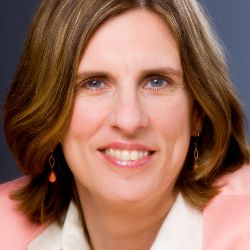
Computing is such a rapidly changing field—one that is always looking ahead to the next innovative technology—that little attention has been paid to looking back toward its origins. ACM was founded in 1947 and now some 65 years later the founders of the field are largely gone and the early practitioners are aging. We know a lot about what technologies were invented, but far less about why or how. We can easily find factual information about the association’s past, such as the date it was created or the officers of a Special Interest Group (SIG), but not the story behind why the SIG was formed. How do we gather such stories to share before it’s too late?
These concerns prompted the creation of the ACM History Committee in 2004 by David Wise and Rick Snod-grass. The History Committee’s charter is "to foster preservation and interpretation of the history of the ACM and its role in the development of computing" (see http://history.acm.org). The committee is composed of two overlapping groups: computer scientists and active representatives of ACM SIGs and committees who understand computing technology and the history of specific subfields; and computing historians and leaders of computing history organizations who understand the reasons for telling the story. This eclectic collection of expertise makes it possible for the committee to consider the many meaningful facets of ACM’s rich history.
For a typical ACM member, the most visible contribution of the ACM History Committee is the recent launch of the Turing Award Web site, which announced this year’s recipient Judea Pearl (see http://amturing.acm.org). In anticipation of the ACM A.M. Turing Centenary Celebration last June, the History Committee worked with ACM Headquarters staff to plan a Web site worthy of what is frequently called the "Nobel Prize in Computing." The Curator-in-Chief, Mike Williams, Professor Emeritus at University of Calgary, led an intensive effort to identify and manage over 40 authors in order to populate this site in a year’s time. Designed by the Ahlgrim Design Group, the site was brought to life with the help of ACM Headquarters staff Wayne Graves and Haritini Kanthou, who implemented a framework for integrating entries from numerous sources.
Another significant project of the committee is funding travel fellowships for historical study of ACM-related archives. We have supported both junior and senior researchers, computer scientists, and historians. Recent topics include Edmund Berkeley, one of ACM’s founders; ACM computer graphics; European contributions to the Open Systems Interconnection (OSI) Reference Model; and ACM’s pioneering computer science curriculums. We have also commissioned a number of oral histories of Turing Award recipients, early ACM presidents, staff, volunteers, and journal editors that can be found in the ACM Digital Archive and linked from our Web site.
How do we gather such stories to share before it’s too late?
If you are nearing retirement, you might be wondering what you should do with the correspondence, manuals, photos, and physical artifacts you have collected throughout your career. The items that are unique and of historical interest should be archived, but finding the pearls in an office full of boxes can be challenging. Our site offers guidelines on how to approach archiving your personal collection, which may help answer some of these questions.
Looking toward the future, a looming challenge in archiving computing history is that so much of the present is being created in the digital world, in email messages that use different mail programs, documents created by different software, and data in different formats. It may also be saved on media that has a short shelf life, for example, floppy disks from original PCs. Just being able to read these materials is technically challenging, but even more difficult is separating valuable information from the routine. How many email messages, even from Turing Awardees, are actually relevant to archiving computing history? This question of archiving electronic materials is one that will demand computing innovation not yet realized in order to examine and store our computing history.



Join the Discussion (0)
Become a Member or Sign In to Post a Comment